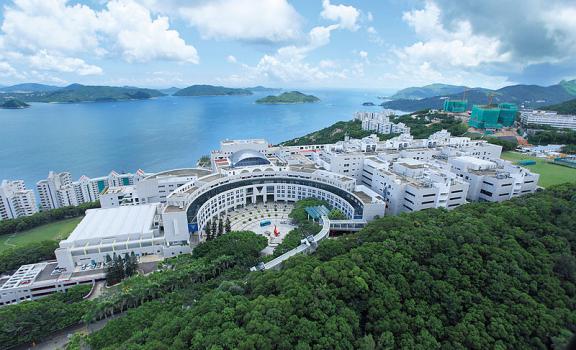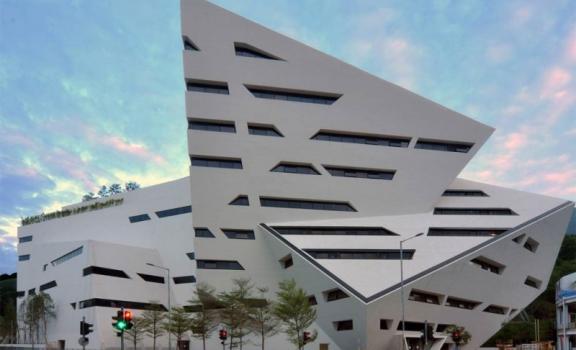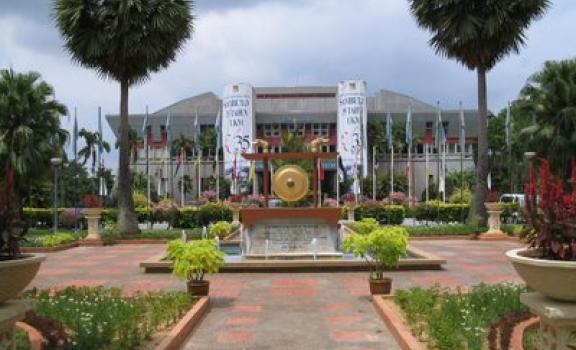Claiming the top five positions in the latest edition of the QS Top 50 Under 50, universities in Asia are coming out strong in the global contemporary market. Many of these young institutions are science- and technology-focused, reflecting a global society in which graduates in these fields are in high demand. With many Asian countries investing heavily in developing and internationalizing their higher education sectors, the region is gaining increasing prominence as a potential destination for study abroad.
A total of 11 universities in Asia feature in the latest edition of the QS Top 50 Under 50, which highlights the world’s top 50 universities under 50 years old, based on the QS World University Rankings®. Four of these belong to the territory of Hong Kong, one the most densely populated areas of the world, which also claims the overall top university in the ranking – the Hong Kong University of Science and Technology (HKUST). South Korea brings two bright young institutions to the list, with Singapore, Japan, Malaysia, Taiwan and Kazakhstan each offering one institution in the Top 50 Under 50.
HKUST, Hong Kong
 Also known as the Hong Kong University of Science and Technology, HKUST tops the overall Top 50 Under 50 for the second year running. The second youngest institution to be listed, HKUST was founded in 1991, giving it even more reason to be proud of its number one spot. Based in Hong Kong in the north of the Clear Water Bay peninsula, the university sits atop a hill on the waterfront of Port Shelter just 30 minutes’ drive from the chaos of central Hong Kong. HKUST has a current enrollment of 12,600 and is ranked 34th in the 2013/14 QS World University Rankings®. The school specializes in the fields of science, engineering, technology and business.
Also known as the Hong Kong University of Science and Technology, HKUST tops the overall Top 50 Under 50 for the second year running. The second youngest institution to be listed, HKUST was founded in 1991, giving it even more reason to be proud of its number one spot. Based in Hong Kong in the north of the Clear Water Bay peninsula, the university sits atop a hill on the waterfront of Port Shelter just 30 minutes’ drive from the chaos of central Hong Kong. HKUST has a current enrollment of 12,600 and is ranked 34th in the 2013/14 QS World University Rankings®. The school specializes in the fields of science, engineering, technology and business.
Nanyang Technological University (NTU), Singapore
 Established in 1991, Singapore’s Nanyang Technological University (NTU) comes a close second in the overall Top 50 Under 50. Ranked joint 41st in the world, NTU offers the biggest campus in Singapore, with almost 500 acres at its main Yunnan Garden campus, and is home to 33,500 students. Nanyang Technological University is currently the fastest climbing among universities in Asia, having risen over 35 places in the world rankings over the last four years. Located to the west of Singapore in Jurong West, NTU sits within an extremely diverse culture of Singapore’s ‘east meets west’ dynamic. Over 42% of the region’s population is from overseas.
Established in 1991, Singapore’s Nanyang Technological University (NTU) comes a close second in the overall Top 50 Under 50. Ranked joint 41st in the world, NTU offers the biggest campus in Singapore, with almost 500 acres at its main Yunnan Garden campus, and is home to 33,500 students. Nanyang Technological University is currently the fastest climbing among universities in Asia, having risen over 35 places in the world rankings over the last four years. Located to the west of Singapore in Jurong West, NTU sits within an extremely diverse culture of Singapore’s ‘east meets west’ dynamic. Over 42% of the region’s population is from overseas.
KAIST, South Korea
 KAIST, or the Korea Advanced Institute of Science and Technology, was the first research-oriented science and engineering institution to be established in South Korea, in 1971. The school has a student body of 10,250. It places third in the Top 50 Under 50, and is ranked 60th in the world. Located in the center of South Korea in the metropolis of Daejeon, students of KAIST have strong transport links to capital city Seoul as well as a large student population, due to the city’s 18 higher education institutions. KAIST is specialized in engineering and technology.
KAIST, or the Korea Advanced Institute of Science and Technology, was the first research-oriented science and engineering institution to be established in South Korea, in 1971. The school has a student body of 10,250. It places third in the Top 50 Under 50, and is ranked 60th in the world. Located in the center of South Korea in the metropolis of Daejeon, students of KAIST have strong transport links to capital city Seoul as well as a large student population, due to the city’s 18 higher education institutions. KAIST is specialized in engineering and technology.
City University of Hong Kong, HK
 Actually founded as a polytechnic a decade earlier, the City University of Hong Kong only became a fully accredited university in 1984. Ranked joint 104th in the world and 4th in the Top 50 Under 50, the school currently has an enrollment of just over 20,100 students and offers over 50 bachelor programs in a comprehensive range of subjects. On the opposite side of the territory to HKUST, City University of Hong Kong is located on the Kowloon peninsula in the west, north of Hong Kong Island. The area here is simultaneously grand yet dog-eared, a place still developing along with its economy. For students however, living is as cheap as it gets.
Actually founded as a polytechnic a decade earlier, the City University of Hong Kong only became a fully accredited university in 1984. Ranked joint 104th in the world and 4th in the Top 50 Under 50, the school currently has an enrollment of just over 20,100 students and offers over 50 bachelor programs in a comprehensive range of subjects. On the opposite side of the territory to HKUST, City University of Hong Kong is located on the Kowloon peninsula in the west, north of Hong Kong Island. The area here is simultaneously grand yet dog-eared, a place still developing along with its economy. For students however, living is as cheap as it gets.
Pohang University of Science and Technology (Postech), South Korea
 The second university in the Top 50 Under 50 to be located in South Korea is the Pohang University of Science and Technology (Postech). Established in 1986, Postech, known for its science and technology research, has grown its student base to approximately 3,250 at present, admitting just 300 undergraduates each year. Located in Pohang, the largest city on Korea’s east coast, the university offers students a lively urban environment, close to a major industrial hub for the steel industry. A popular destination with locals and visitors is the Bukbu beach, found on the north side of the town and home to a seaside strip of entertainment and laidback commercial culture.
The second university in the Top 50 Under 50 to be located in South Korea is the Pohang University of Science and Technology (Postech). Established in 1986, Postech, known for its science and technology research, has grown its student base to approximately 3,250 at present, admitting just 300 undergraduates each year. Located in Pohang, the largest city on Korea’s east coast, the university offers students a lively urban environment, close to a major industrial hub for the steel industry. A popular destination with locals and visitors is the Bukbu beach, found on the north side of the town and home to a seaside strip of entertainment and laidback commercial culture.
Hong Kong Polytechnic University (PolyU), HK
 Hong Kong Polytechnic University (PolyU) comes 8th in the Top 50 Under 50, ranked 161st in the world. Established as a university in 1994 but with origins to dating back to 1937, the school now has a student body of just over 28,300. Located in Hung Hom, south of the City University of Hong Kong, Hong Kong Polytechnic University boasts proximity to Victoria Harbour to the south, King’s Park in the west and Hung Hom Bay in the east. The school has six faculties in applied sciences, business, construction, engineering, health and social sciences and the humanities.
Hong Kong Polytechnic University (PolyU) comes 8th in the Top 50 Under 50, ranked 161st in the world. Established as a university in 1994 but with origins to dating back to 1937, the school now has a student body of just over 28,300. Located in Hung Hom, south of the City University of Hong Kong, Hong Kong Polytechnic University boasts proximity to Victoria Harbour to the south, King’s Park in the west and Hung Hom Bay in the east. The school has six faculties in applied sciences, business, construction, engineering, health and social sciences and the humanities.
University of Tsukuba, Japan
With a student body of almost 16,600, the University of Tsukaba is actually one of the oldest higher education centers in Japan, dating back as far as 1872 – but it only gained university status in 1973. Boasting the largest single campus in Japan, the university sits on over 630 acres of land in the city of Tsukaba, just an hour’s drive north-east of the capital Tokyo and near Kasumigaura Lake, the second-largest lake in Japan. Famous for its research in the fields of physics, economics, physical education and social science, the university is ranked joint 210th in the world and comes 14th in the Top 50 Under 50.
Universiti Kebangsaan Malaysia, Malaysia
 The Universiti Kebangsaan Malaysia, also known at the National University of Malaysia, has a current enrollment of over 22,000 students hailing from over 35 different countries. The main campus is situated less than a 30-minute drive south of capital city Kuala Lumpur, in Bangi, Selangor, offering both the eclectic cultural diversity of the capital and the slightly more laid-back spa culture of Selangor. There is also a branch campus within the capital, where students can experience a capital carved by multiple cultures while remaining (according to the university’s marketing slogan) ‘truly Asian’. The university is ranked joint 269th in the world and comes 19th in the Top 50 Under 50.
The Universiti Kebangsaan Malaysia, also known at the National University of Malaysia, has a current enrollment of over 22,000 students hailing from over 35 different countries. The main campus is situated less than a 30-minute drive south of capital city Kuala Lumpur, in Bangi, Selangor, offering both the eclectic cultural diversity of the capital and the slightly more laid-back spa culture of Selangor. There is also a branch campus within the capital, where students can experience a capital carved by multiple cultures while remaining (according to the university’s marketing slogan) ‘truly Asian’. The university is ranked joint 269th in the world and comes 19th in the Top 50 Under 50.
Hong Kong Baptist University, HK
Established as a Baptist college by American Baptists as early as 1956, Hong Kong Baptist University gained full university status in 1994 and is ranked 288th in the world, placing 26th in the Top 50 Under 50. The school has five campuses, three of which are located in Kowloon Tong; this is a relatively residential area, a popular place to live due to its reputation for high quality educational establishments. The university has just over 10,600 students, and is well regarded within the arts and humanities subjects, while also specializing in science disciplines.
National Yang Ming University, Taiwan
 Ranked joint 295th in the world and placing 30th in the Top 50 Under 50, Taiwan’s National Yang Ming University is 10th among the top universities in Asia under 50. The school offers strong programs in medicine, life sciences and biotechnology, with a focus on developing the healthcare and biotechnology industries in Taiwan as a whole. Established in 1975 as a medical college, the university now has a student body of just over 4,100, located in the Beitou district of Taipei. Not so long ago known as one of Asia’s uglier cities, Taipei has recently undergone transformation into a cleaner, more efficient, friendlier version of itself, making it one of the most dynamic and livable places in the region.
Ranked joint 295th in the world and placing 30th in the Top 50 Under 50, Taiwan’s National Yang Ming University is 10th among the top universities in Asia under 50. The school offers strong programs in medicine, life sciences and biotechnology, with a focus on developing the healthcare and biotechnology industries in Taiwan as a whole. Established in 1975 as a medical college, the university now has a student body of just over 4,100, located in the Beitou district of Taipei. Not so long ago known as one of Asia’s uglier cities, Taipei has recently undergone transformation into a cleaner, more efficient, friendlier version of itself, making it one of the most dynamic and livable places in the region.
Image credits: HKUST Pao/Wikicommons; Baycrest/Wikicommons; Mountainlife/Wikicommons
